The Science and Industry Museum is changing. This year, we are making final preparations to vacate the Grade II listed Lower Campfield Market, which has been our much-loved Air and Space Hall gallery since 1985.
For 36 years, the museum has leased the Lower Campfield Market Hall from its owners, Manchester City Council, on a long-term lease. Now, in the interests of conserving this historic Grade II listed building, Manchester City Council are taking back possession of their building and exploring options for its future use. Museum colleagues are working to return the fantastic collections in the gallery, including many full-size aircraft, to their owners, in preparation for the next chapter for this iconic Castlefield building.
A Victorian market hall
Completed in 1878, the Lower Campfield Market Hall was designed as a ‘canopied’ open-sided market hall. It was built at Camp Field, which was already the location of popular markets and fairs and was close to a major railway goods yard—today the site of the Science and Industry Museum.
Lower Campfield Market is one of a pair of buildings with the Upper Campfield Market, which is further along Liverpool Road, towards Deansgate. They were built as a pair on either side of St Matthew’s Church, which stood between the two halls until it was demolished in 1951.
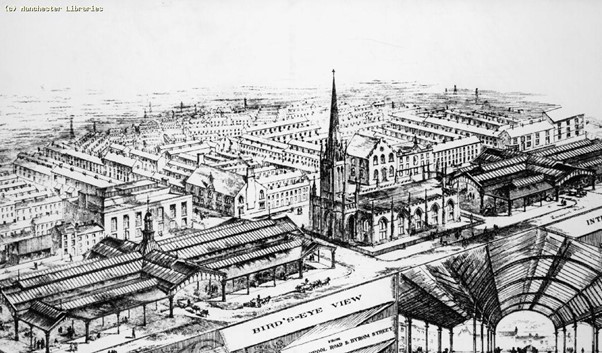
Image from Manchester Libraries, Information and Archives
Within just a few years of opening as market halls, Lower Campfield Market was largely turned over to travelling exhibitions, such as the ‘Smoke Abatement Exhibition’ in 1882. The smaller Upper Campfield Market initially retained its original purpose as a cheese and vegetable market.
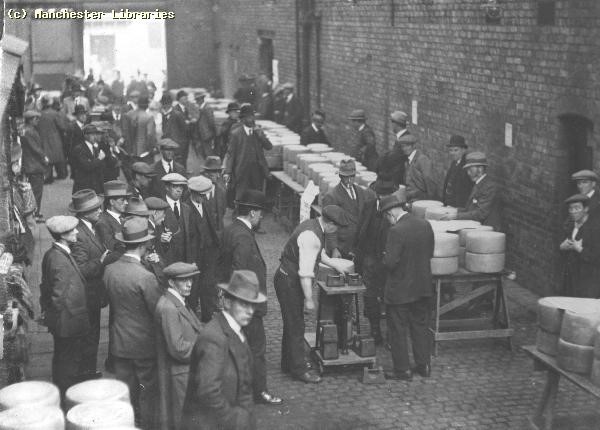
Image from Manchester Libraries, Information and Archives
The City Exhibition Hall
In 1900 Lower Campfield Market closed as a market for good. Walls were added to the previously open-sided building to make it a more suitable exhibition space. In 1909, Lower Campfield Market was transformed into the permanent City Exhibition Hall. An advertisement declared City Hall the ‘largest, best lighted and heated and most excellently adapted covered, enclosed and balconied building in the kingdom’ (Manchester Guardian, 15 Dec 1909, p.1). During its time as Manchester’s City Exhibition Hall it was used for trade shows and as a popular entertainment venue, displaying everything from a Cinderella Dolls Show to a Grocers’ Exhibition.
Wartime
When Britain went to war with Germany in 1914, the building was used initially as an indoor military parading ground for the Manchester Pals Battalions. During the First World War, buildings often changed use as needed for the war effort, and in 1917, women workers later used the hall to test fuzes for explosive shells. After the First World War ended in 1918, the building was used by the Ministry of Labour until 1920 for the purpose of training soldiers and sailors in new occupations.
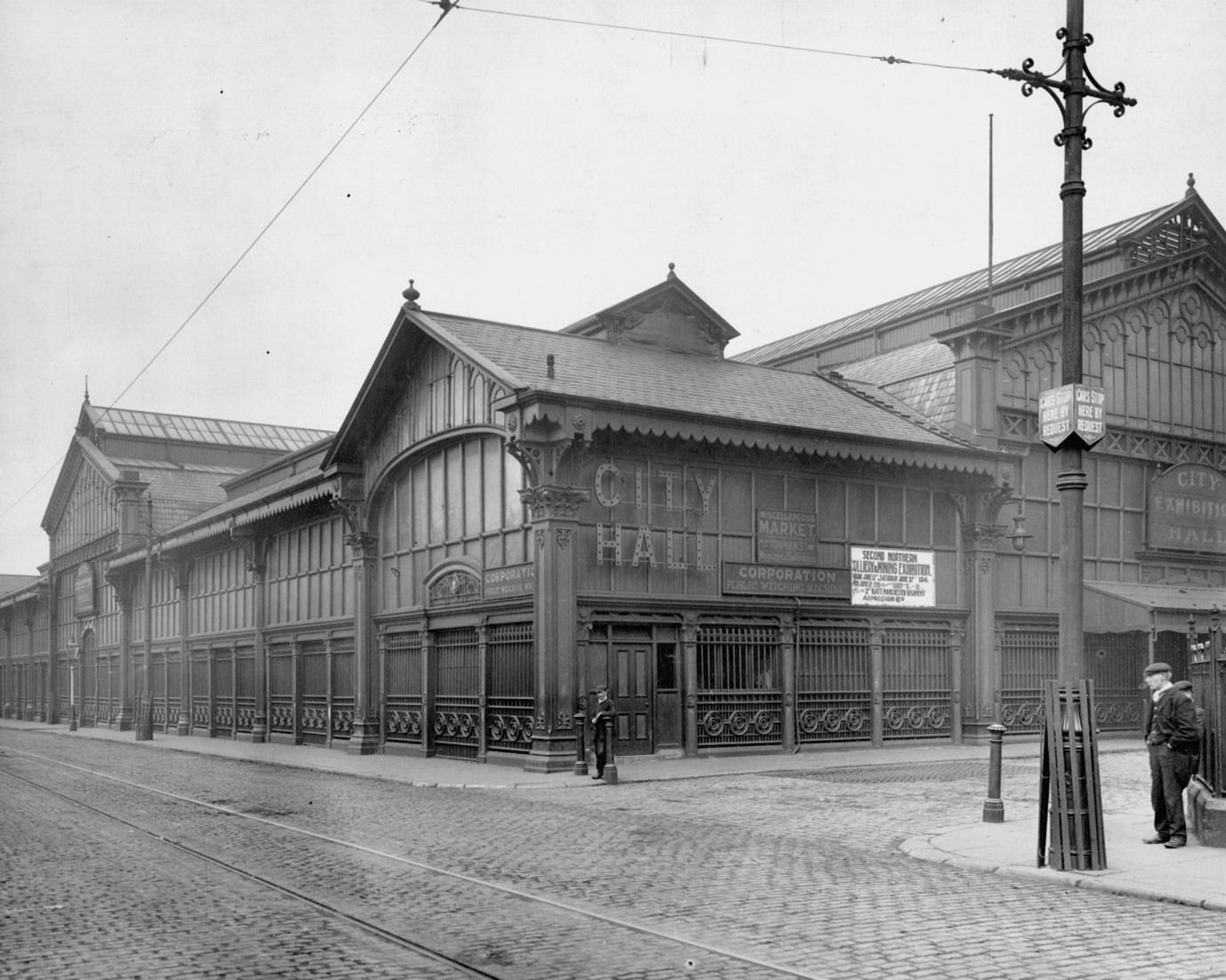
Image from Manchester Libraries, Information and Archives
Between the two World Wars, from 1920 to 1939 Manchester’s textile, engineering and commercial industries again filled the hall with varied and popular displays.
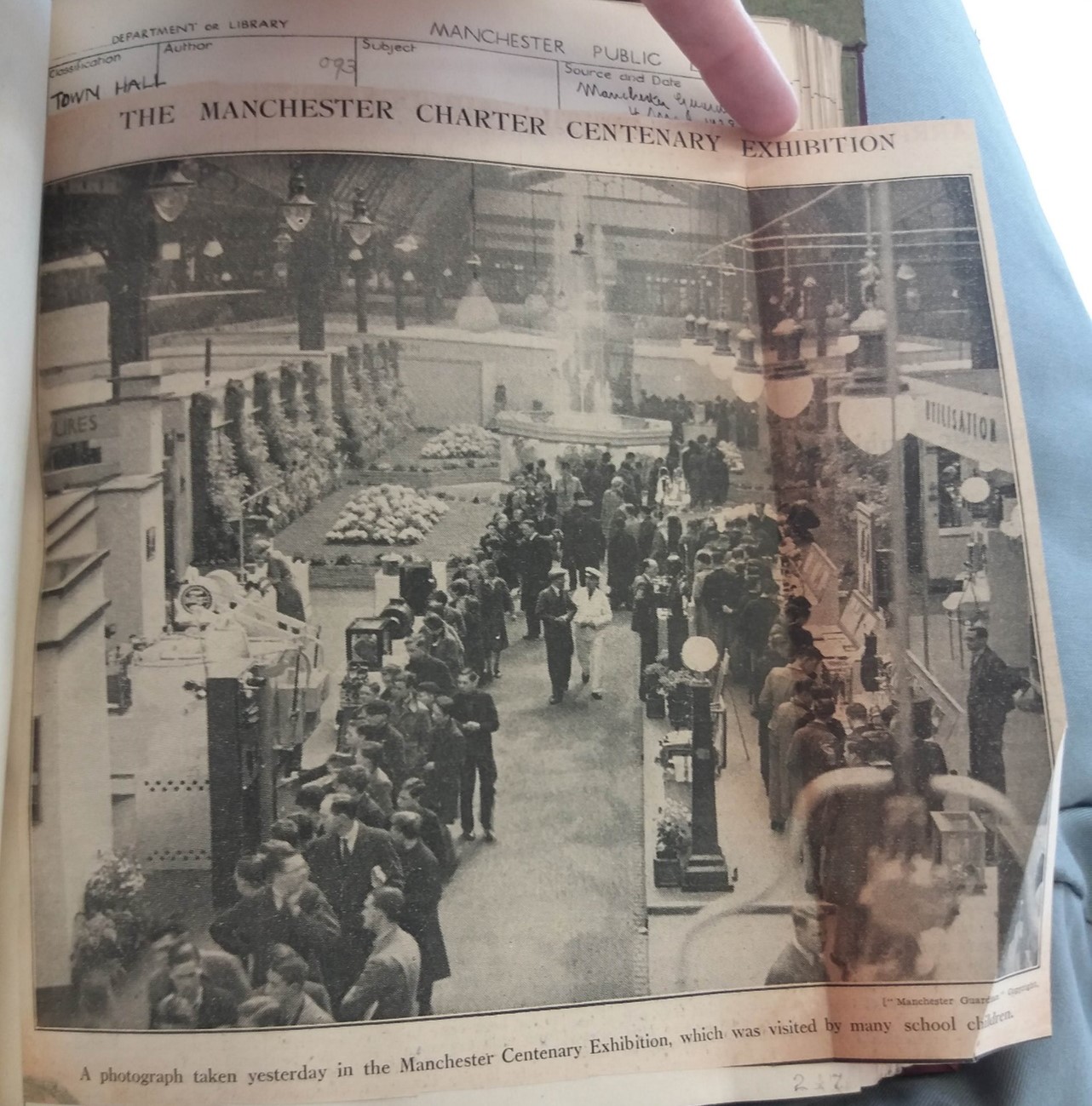
Image published in the Manchester Guardian 4 May 1938, reproduced from a copy held by Manchester Libraries, Information and Archives
This peaceful, trade-oriented hiatus was not to last. When the Second World War broke out in 1939, the building was again repurposed for the war effort. This time, due to its enormous size, women workers tested barrage balloons inside the building.
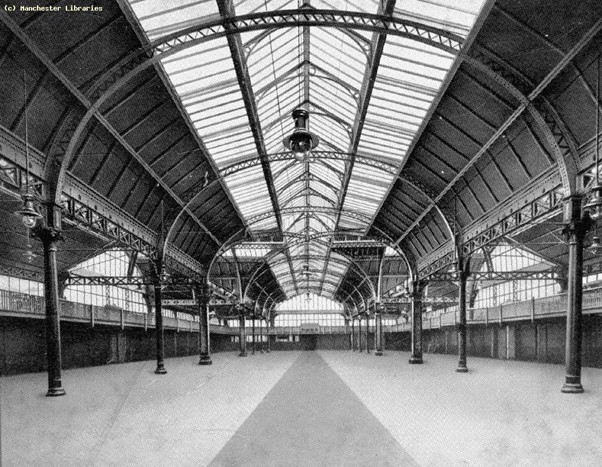
Image from Manchester Libraries, Information and Archives
A variety of entertainments
After playing a part in two World Wars, and some well-earned renovation, the Lower Campfield Market re-opened as City Exhibition Hall for popular public exhibitions in 1947. It was the venue for trade-oriented shows like Brighter Homes and Ideal Homes exhibitions. Through the 1950s and 1960s, the building enjoyed a heyday as the go to destination in Manchester for modern, entertaining lifestyle exhibitions, providing generations of Mancunians with a fun day out and an aspirational glimpse at imagined homes of the future.
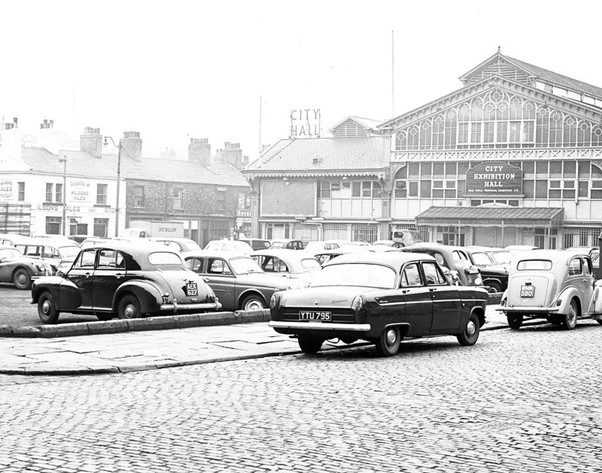
Image from the Town Hall Photographer’s Collection, Manchester Libraries, Information and Archives
A precarious time
After a long and eventful century, the history and Victorian architecture of the Lower Campfield Market was recognised by English Heritage when they awarded it Grade II listed building status in 1974. However, despite this important recognition of the building’s historical value, the building was falling into disrepair. Other exhibition venues like Belle Vue were more popular. A final blow to the City Exhibition Hall was dealt when in 1977, almost 100 years since the building first opened as a market hall, it suffered a disastrous fire which damaged the east end of the building. The damage was so severe that Manchester City Council considered demolition.
Thanks to many persuasive advocates, they instead took the decision to restore the building and use it to house Manchester Air & Space Museum, with aircraft exhibits to be borrowed on long term loan from the RAF Museum and other lenders.

© The Board of Trustees of the Science Museum
The Manchester Air & Space Museum
In mid-1982, an inaugural meeting was held at Manchester Town Hall of a Society of Friends to provide volunteers for the new Manchester Air & Space Museum. Enthusiasm was high, and several hundred willing volunteers turned up. Later in 1982 the volunteers visited the building, and saw the preparations marching ahead, and the museum opened triumphantly on 30 March 1983.

© The Board of Trustees of the Science Museum
The purpose of the museum was to showcase Manchester’s role in the deve lopment of aviation and aircraft. The collections on display were borrowed from organisations including the RAF Museum and The Aeroplane Collection. Bringing the collection into the building was a remarkable feat. Sixteen full-size aircraft were initially winched, craned and cajoled into the building with the essential support of an army of skilled and passionate volunteers. Star exhibits included an Avro Avian IIIA, and an imposing, building-spanning Avro Shackleton.
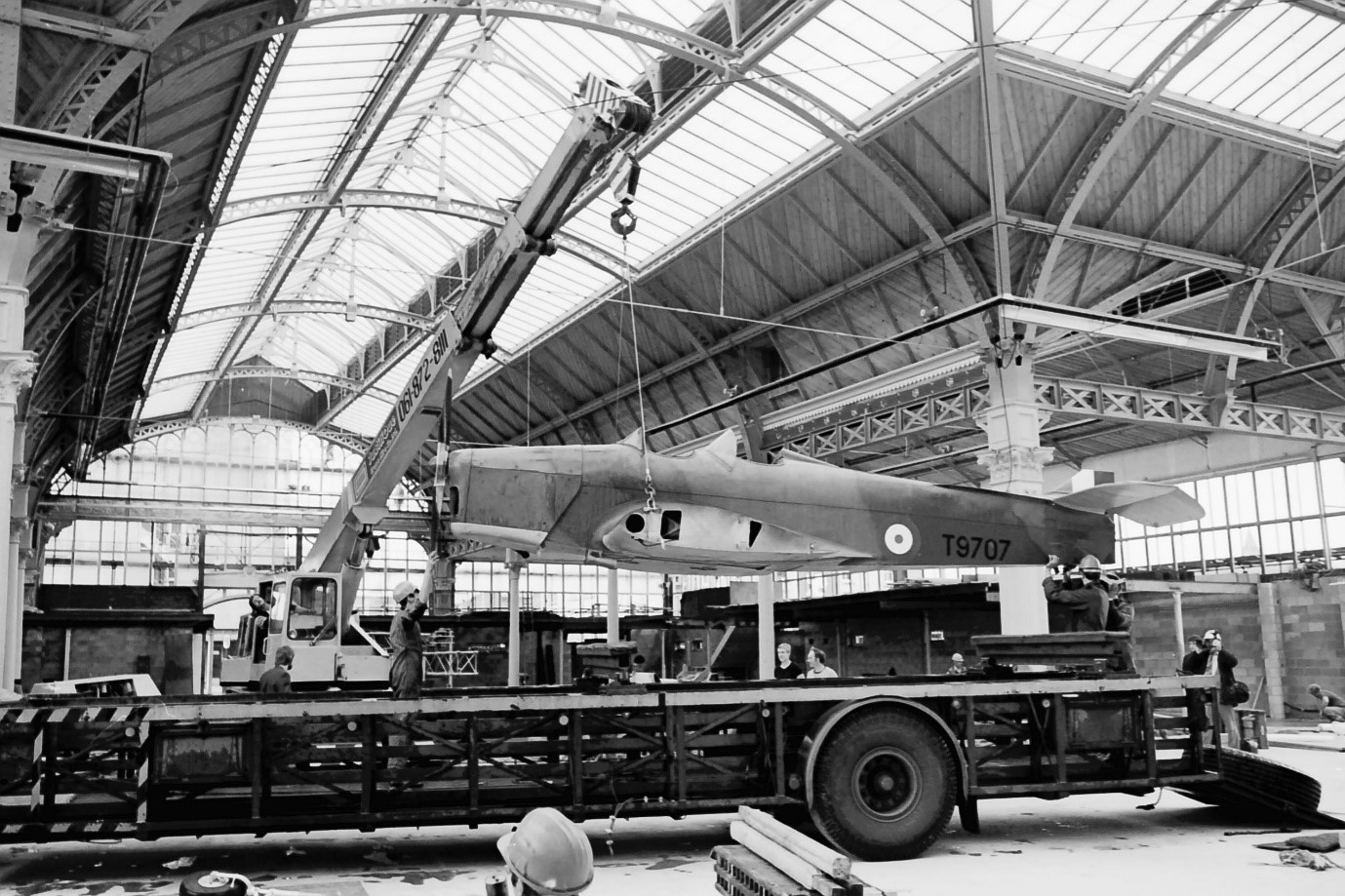
Within a year of opening, the new museum faced sponsorship and financial challenges. The Greater Manchester Council’s Air & Space Museum was disbanded and welcomed as the Air and Space Hall gallery of the Greater Manchester Museum of Science and Industry on 1 December 1985.
Supported by a fantastic team of volunteers, the Air and Space Hall was one of the most popular and loved galleries of the museum, delighting generations of visitors with the sheer scale and impact of so many full-size aircraft displayed so beautifully in the Victorian market hall.

The Science Museum Group took stewardship of the building and collections since the lease was transferred to the Group in 2012. The Lower Campfield Market was the popular Air and Space Hall of the Science and Industry Museum for an action-packed 35 years, from 1985. The gallery was the venue for clubs, special events, costumed character shows, a planetarium, dinners, fairs, gigs, photo shoots, art installations, whisky tastings and more.
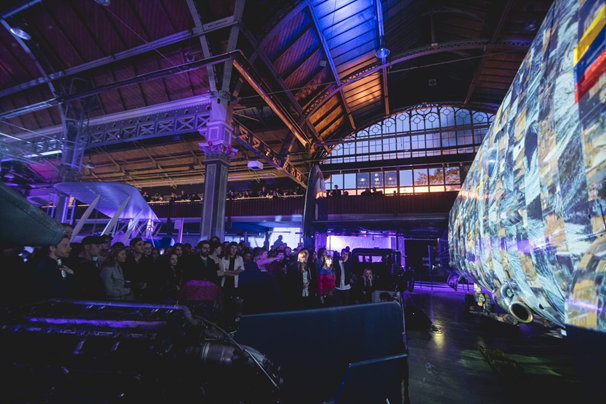
© The Board of Trustees of the Science Museum
The hall has been filled with the voices of visitors, music, industrious volunteers and the whir of fun flight simulators during its time as a museum gallery. The Science and Industry Museum are proud to have been part of the history of this special building.

© The Board of Trustees of the Science Museum
Looking ahead
The Air and Space Hall gallery has been closed intermittently to visitors for essential maintenance and conservation work from 2019, re-opening temporarily in autumn 2020 between lockdowns. During the COVID-19 pandemic, the difficult decision was taken to vacate the lease and return the Lower Campfield Market building to Manchester City Council in preparation for its next chapter.
The Lower Campfield Market has a fascinating past, but it also has an important place in the future of Manchester’s economic and cultural landscape. Manchester City Council are looking to create an opportunity to introduce new activities into the Lower Campfield Market building to help support Manchester’s economic recovery from the impacts of the COVID-19 pandemic. Working with Allied London Properties, the Council are developing proposals to refurbish both Upper and Lower Campfield Markets to create and support jobs. While this is the end of an era for the Science and Industry Museum, it is the start of a new chapter for the hard-working Upper Campfield Market, which will go on to have an exciting new role in Manchester’s future.
